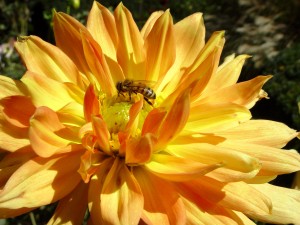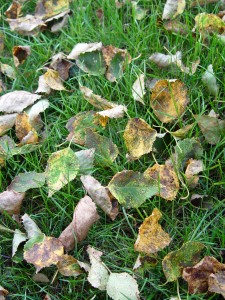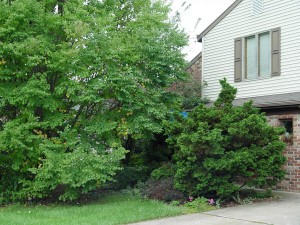What Gardeners Want and What They Get Are Two Different Things
July 12th, 2013
I’ve been in hundreds of Harrisburg-area home gardens and have talked gardening with literally thousands of locals over the past 20 years or so.
All of that has helped me to zero in on exactly what gardeners/yardeners want.
Here goes:
They want plants that grow to the desired size the first year and then stay that way.
They want plants that never get bugs or disease.
They want plants that attract birds and butterflies but not bees, rabbits, groundhogs or deer.
They want flowers that bloom non-stop all growing season but without having to replant anything each year.
They want gardens that change with the seasons and stay colorful at all times, including winter.
They want lots of flowers, berries and lush life but no “mess,” i.e. no dropped leaves, no fallen berries, no flower petals to sweep off the patio.
They want plants that need no trimming.
They want plants that need no spraying.
They want plants that need no watering.
In other words, no maintenance.
They want plants that live forever and hit peak form the very first season.
And, oh yeah, it all has to be cheap, too.
As you might surmise, there’s a big difference between what gardeners want and what they get.
Plants – like the gardeners who cultivar them – are quite imperfect.
All have their plusses and minuses.
Like most things in life, gardening is an exercise in weighing tradeoffs.
Usually, you have to give up one or two ideals to gain two or three traits that you’ve judged to be more important.
There’s some give and take along the way, too.
A little tolerance, patience, forgiveness and/or recalculation can bring you much more peace in the garden than either constantly ripping out disappointments or skipping the whole affair.
Six truisms I’ve learned that might help:
1.) Do your size homework before buying. Pay attention to mature plant sizes and look for choices that match the space you’ve got.
Also, accept that plants don’t have off or pause buttons. All continue to grow over time, even beyond what the plant tags might say.
That means you will, at some point, have to size-control. The only questions are, “How much?” and “At what point?”
2.) Ask about likely troubles. Veteran gardeners, horticulturists and other pros know which plants are most likely to run into bug, disease, animal and other troubles – and it’s really a relative few.
Troubles are predictable if you’ve been around long enough.
Dwarf Alberta spruce get spider mites. Azaleas get lace bugs. Lupines melt in our summer heat. But fothergilla, Hinoki cypress, sedum and ornamental grasses hardly ever run into problems.
Talk to experts. Read up ahead of time. And don’t assume that the most common plants are also the most trouble-free. The exact opposite is more often true.
Better to save aggravation and dead plants later by investing more time up front, I think.
3.) Move your mistakes. I know a guy who ripped out and tossed a sidewalk planting of salvia when he realized bees liked them. For one thing, bees are interested in pollen, not stinging passersby. But these could’ve readily been moved elsewhere instead of into a trash bag.
Most plants move easier than you think. It’s OK to edit. If something’s not happy or not suitable in Spot A, try Spot B.
Most veteran gardeners have moved every plant in their yard a minimum of three times.
4.) There is no such thing as a “no-maintenance” landscape. Yes, some yards need more care than others. But the only landscape that never needs any watering, weeding or trimming is the one made out of asphalt and concrete.
The two leading no-maintenance reasons are lack of time and lack of energy/health. I think two other factors often come into play – a lack of knowledge about plant care and a basic dislike for the work.
Let’s face it. Some people just like to get out in the fresh air and weed and deadhead and edge. It’s no-brainer therapy time and free exercise to boot.
Others despise the dirt, the blackflies and the sweat and would much rather spend free time Facebooking or whacking around a little white ball.
You get to pick, but before you buy your house and/or plan the landscape, know which camp you fall into. Then plan your gardens and plant selections accordingly (see Nos. 1 and 2.)
5.) Natives don’t mean a free ride either. Part of what’s fueling greater use of native plants in the landscape is the perception that natives take no work, don’t get bugs and don’t die.
There are lots of good reasons to plant more natives, but none of the above are on that list.
Like any other plant, a given native species will do better in certain areas than others. Some of them get chewed by bugs, some of them get a little too frisky, and yes, some of them even die.
By all means, use native plants, but A.) realize they’re not without tradeoffs, and B.) you still have to do your homework.
6.) Roll with the weather. Nothing makes a gardener whine more than the weather (except maybe groundhogs).
The ironic truth about plants and weather is that what’s good for one set of plants is bad for another – although I can’t think of anything good about hail, tornados, 12 inches of rain in a half-hour and the other assorted insults we too often get.
The optimist looks at the wilting hydrangea and says, “Well, at least the cactus is thriving!”
The pessimist overlooks the overwintered camellia and says, “That darn hot weather is frying my astilbes!”
Either way, we can’t do much about what nature gives us.
Neither does it do much good to curse the weather forecasters when you skip watering the garden, only to find that the “rainstorm of the century” brings not a drop.
The bottom line is that we get what we get.
Sometimes we’re ready, sometimes we get blind-sided.
In the end, all you can do is adjust… and look at any lost plants as a good excuse to buy that new red-blooming coreopsis you had your eye on.










